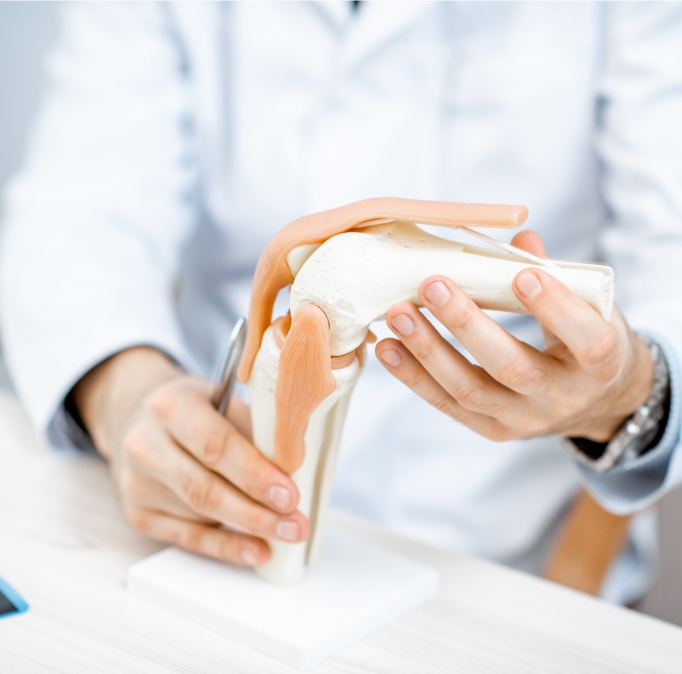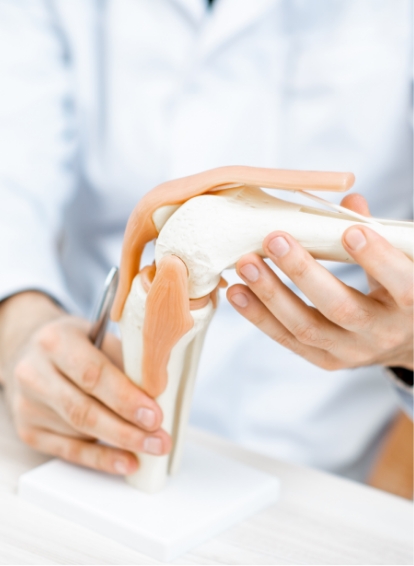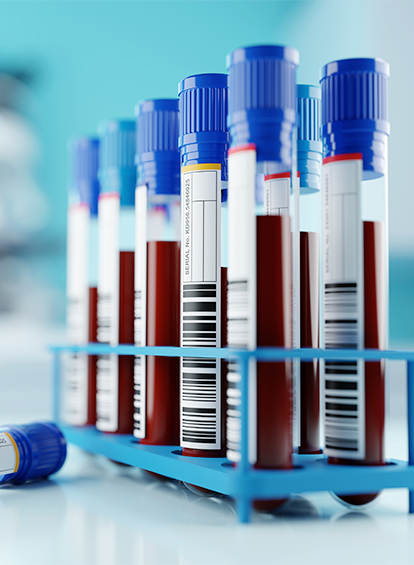Sports & Non-Surgical Orthopaedic Treatments
Wear and Tear (Degenerative Joint Disease)
Wear and tear, medically known as degenerative joint disease or osteoarthritis, is a chronic condition where the cartilage cushioning the joints gradually deteriorates. This breakdown leads to pain, stiffness, and limited joint movement, commonly affecting weight-bearing joints like the knees, hips, and spine, as well as the hands. Over time, wear and tear can significantly impact daily activities, making movement painful and more challenging.
At The Clinica, our specialists in Sports & Non-Surgical Orthopaedics provide targeted treatments for degenerative joint disease, aiming to alleviate pain, improve mobility, and preserve joint function for a better quality of life.

What is it?
Degenerative joint disease, or wear and tear, is a condition where the cartilage within a joint wears down over time, leading to bone-on-bone contact. Cartilage is essential for smooth joint movement, acting as a cushion that absorbs impact and allows bones to glide over each other with minimal friction. When this cartilage wears away, it leads to pain, swelling, and a reduced range of motion. Bony growths, called bone spurs, may also form around the joint, causing further discomfort.
Symptoms of wear and tear vary in severity, from mild discomfort to severe pain and stiffness that limits daily activities. The pain is often worse after activity or at the end of the day, and the joint may feel stiff upon waking or after periods of inactivity. Degenerative joint disease can affect various joints, with the knees, hips, and hands being the most common sites.
This condition progresses gradually, often becoming more noticeable with age. Early intervention and management are essential to slow the progression, alleviate symptoms, and maintain joint function.
Book an appointment
Additional Information

Causes of the condition
Degenerative joint disease is primarily caused by the natural aging process, as the cartilage within joints gradually breaks down over time. However, several factors can accelerate wear and tear, including previous joint injuries, repetitive use, and excessive weight, all of which place added stress on the joints. Athletes and individuals in physically demanding jobs are particularly susceptible due to the repetitive impact on specific joints.
Genetics also play a role, as those with a family history of osteoarthritis may be more likely to develop the condition. Additionally, muscle imbalances and joint misalignment can contribute to uneven pressure on the cartilage, hastening its deterioration. Chronic inflammatory conditions, such as rheumatoid arthritis, can further damage the cartilage, increasing the likelihood of developing degenerative joint disease.
Lifestyle factors, such as obesity and lack of physical activity, contribute to joint stress, especially in weight-bearing joints. Maintaining a healthy weight and engaging in regular, low-impact exercises can help protect joints from premature wear and tear.
Tests that can be done to confirm the condition
Diagnosing degenerative joint disease typically involves a physical examination and an assessment of the patient’s medical history, symptoms, and lifestyle factors. The clinician may assess joint movement, look for swelling or tenderness, and observe any visible deformities, which can indicate cartilage loss or bone spur formation.
Imaging tests, such as X-rays, MRI, and CT scans, are commonly used to confirm the diagnosis and assess the extent of joint damage. X-rays reveal cartilage loss, joint space narrowing, and bone spurs, which are key indicators of degenerative joint disease. MRI provides a detailed view of the joint’s soft tissues, allowing the clinician to assess the degree of cartilage damage and detect any inflammation within the joint.
In some cases, blood tests may be conducted to rule out other forms of arthritis, such as rheumatoid arthritis or gout, which can present with similar symptoms but have different underlying causes and treatment approaches.
Effective treatments
Treatment for degenerative joint disease aims to relieve pain, reduce inflammation, and improve joint function. Initial treatment often involves lifestyle modifications, such as weight management and low-impact exercises, to reduce joint stress and strengthen the muscles surrounding the affected joint. Gentle exercises, like swimming, cycling, and stretching, can help improve flexibility and maintain joint mobility without placing excessive strain on the joint.
Physical therapy is also beneficial for patients with degenerative joint disease, focusing on exercises that improve strength, balance, and range of motion. Strengthening the muscles around the affected joint provides better support and reduces stress on the cartilage. Ergonomic adjustments and assistive devices, such as braces or orthotics, may be recommended to further protect the joint.
For pain management, non-surgical options like corticosteroid injections or hyaluronic acid injections are effective in providing temporary relief from inflammation and joint stiffness. Platelet-rich plasma (PRP) therapy and other regenerative treatments are emerging options that aim to stimulate tissue repair within the joint. In advanced cases where joint damage is severe, surgical intervention, such as joint replacement, may be necessary to restore function and alleviate pain.
Book an appointment for an initial consultation
Booking an initial consultation at The Clinica is the first step toward effective management of degenerative joint disease. During this session, our specialist will perform a comprehensive evaluation, discussing your symptoms, medical history, and lifestyle factors that may contribute to joint stress. A thorough physical examination will help identify the extent of the condition and guide the next steps.
If required, imaging tests like X-rays or MRI will be arranged to confirm the diagnosis and assess the degree of cartilage loss. Based on these findings, a personalised treatment plan will be developed, focusing on pain relief, rehabilitation, and strategies to maintain joint health and prevent further degeneration.
Frequently Asked questions
While degenerative joint disease cannot be reversed, effective treatment can help manage symptoms, reduce pain, and improve joint function, slowing the progression of the condition.
Corticosteroid injections are generally safe and can provide temporary relief from inflammation and pain. They are typically used as part of a broader treatment plan and administered with medical guidance.
Low-impact activities, such as swimming, cycling, and walking, are ideal for managing joint wear and tear. These exercises support flexibility and strength without placing undue stress on the joints.
Surgery is usually considered only in advanced cases where conservative treatments have not been effective, or if there is significant joint damage. Joint replacement is a common option for severe cases.
Yes, maintaining a healthy weight can reduce stress on weight-bearing joints, improving symptoms and slowing the progression of degenerative joint disease, particularly in the hips and knees.
Specialised Clinics
General Enquiries
Please send your enquiry to us and our Practice Manager will be in touch shortly. Alternatively, if you would rather speak to us or your enquiry requires our urgent attention, please call us on 01344 946363.








